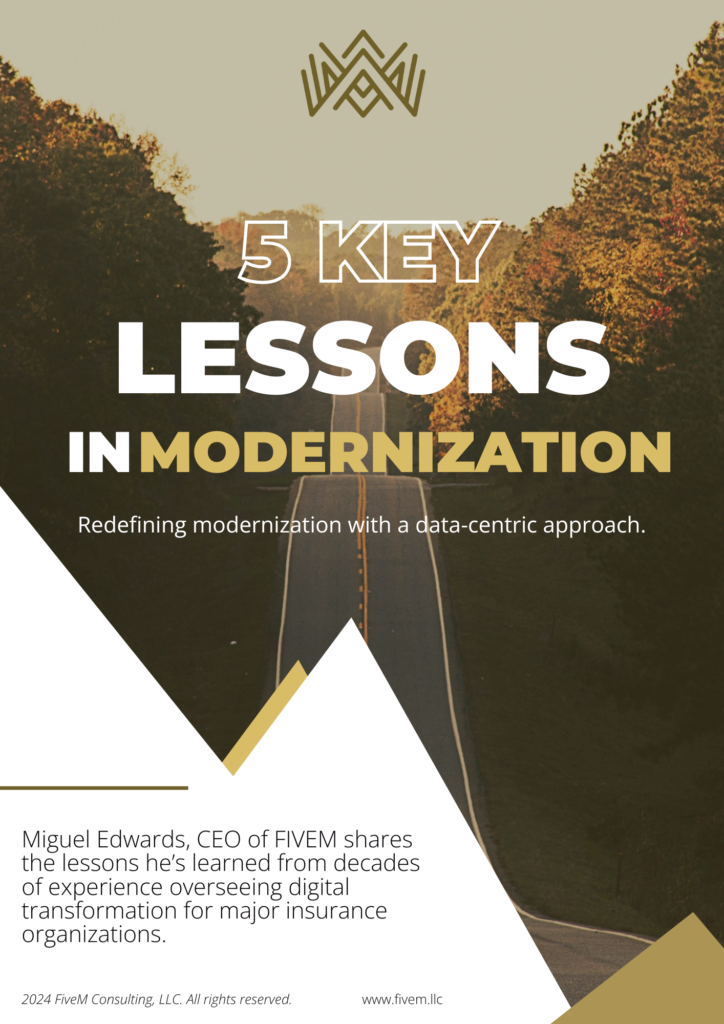Insurance companies are pouring millions into policy administration upgrades, new tech stacks, and modernization initiatives. Yet, instead of driving efficiency and growth, most efforts lead to ballooning budgets, frustrated teams, and systems that are just as—if not more—complex than before.
If modernization feels like an uphill battle, you’re not alone. The problem isn’t the technology—it’s the approach. Let’s dive into the biggest mistakes insurance companies make and what they should do instead.
The Biggest Mistakes in Insurance Modernization
1. Chasing Technology Instead of Strategy
Many insurers assume that upgrading their policy administration system or adopting AI-driven underwriting will magically transform their business. But technology alone doesn’t fix broken processes, outdated thinking, or misaligned teams.
The Fix: Start with strategy. Align modernization efforts with clear business goals, and let technology serve that vision—not the other way around.
2. Ignoring the Power of Data
New platforms and tools are often implemented without addressing messy, siloed, and unreliable data. Without a solid data foundation, even the most advanced systems struggle to provide meaningful insights or automation.
The Fix: Prioritize data architecture and governance. Ensure your data is accurate, accessible, and structured to allow seamless integration across platforms.
3. Failing to Align IT and Business Teams
A major barrier to modernization success is the disconnect between IT and business leadership. IT teams constantly put out fires, while business leaders push for rapid changes without understanding the technical debt they’re creating.
The Fix: Foster strategic alignment between IT and business teams. Set shared objectives and ensure IT has a seat at the decision-making table.
4. Overlooking Change Management
Technology evolves quickly—but people don’t. Employees, agents, and customers often resist new systems because they weren’t properly introduced, trained, or involved in the process.
The Fix: Invest in a structured change management program. Engage employees early, provide continuous training, and build a culture where change is embraced rather than feared.
5. Measuring Success in the Wrong Way
Many insurers judge modernization success by project completion rather than actual business impact. A system going live doesn’t mean it’s improving efficiency, reducing costs, or enhancing the customer experience.
The Fix: Define success metrics aligned with business goals, such as:
- Faster claims processing
- Increased underwriting efficiency
- Improved policyholder retention
What to Do Instead: The FiveM Modernization Framework
At FiveM Consulting, we’ve helped insurance organizations navigate modernization without wasted budgets or headaches. Our framework focuses on five key pillars:
1. Business-First Strategy
Before selecting technology, define clear business objectives. Modernization should support your goals, not dictate them.
2. Data Mastery
A strong data architecture ensures automation and insights actually work. Data needs to be clean, structured, and accessible.
3. IT & Business Alignment
Technology and business teams must collaborate seamlessly. Remove silos and create shared accountability.
4. Change Agility
A structured change management process drives adoption and innovation. Employees must feel supported through transitions.
5. Measurable Outcomes
Track ROI-driven metrics rather than just system implementations. Success should be measured in operational improvements and business growth.
The Bottom Line
Modernization should make your insurance company better—not just more complicated. If your digital transformation efforts aren’t producing real results, it’s time to rethink your approach.
Want a proven roadmap for modernization success? Let’s talk. We’ll help you cut through the noise, align your strategy, and make your modernization investments actually pay off.





